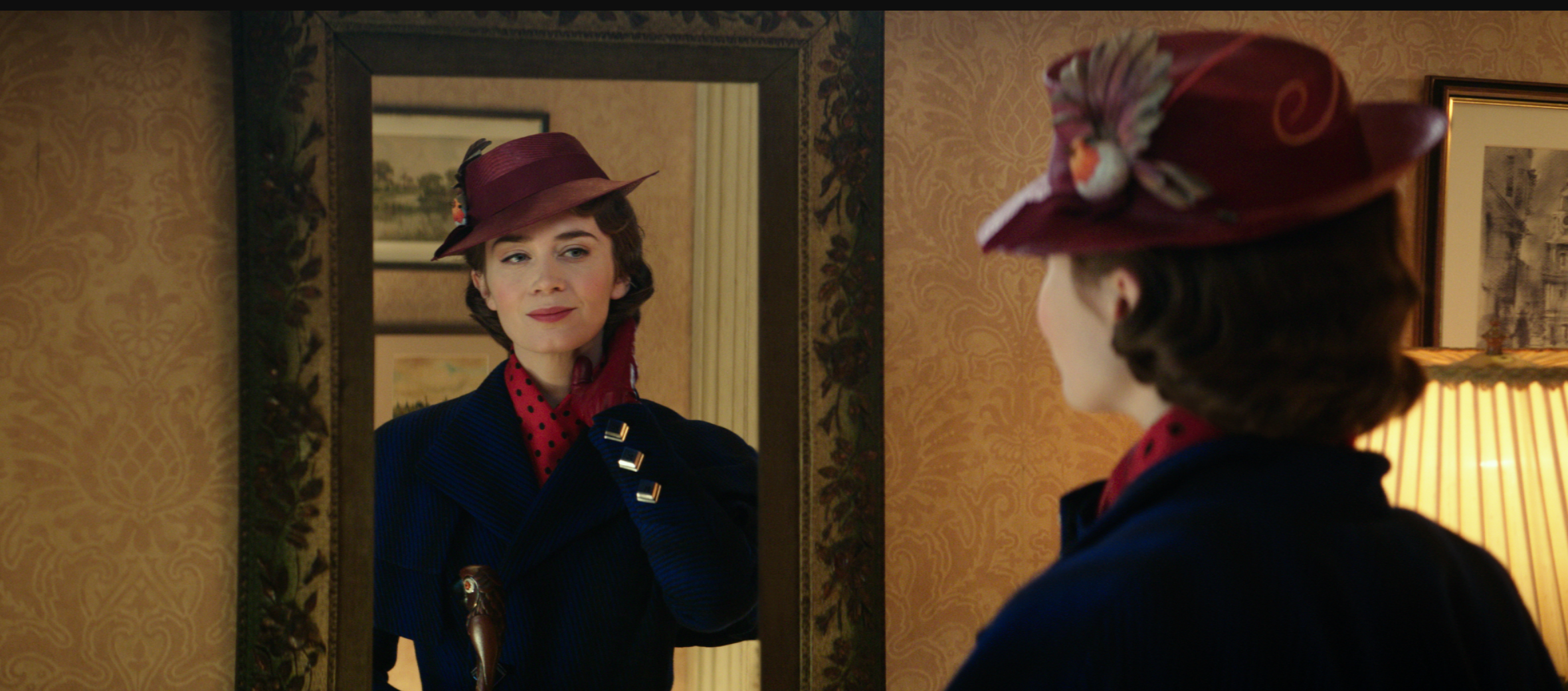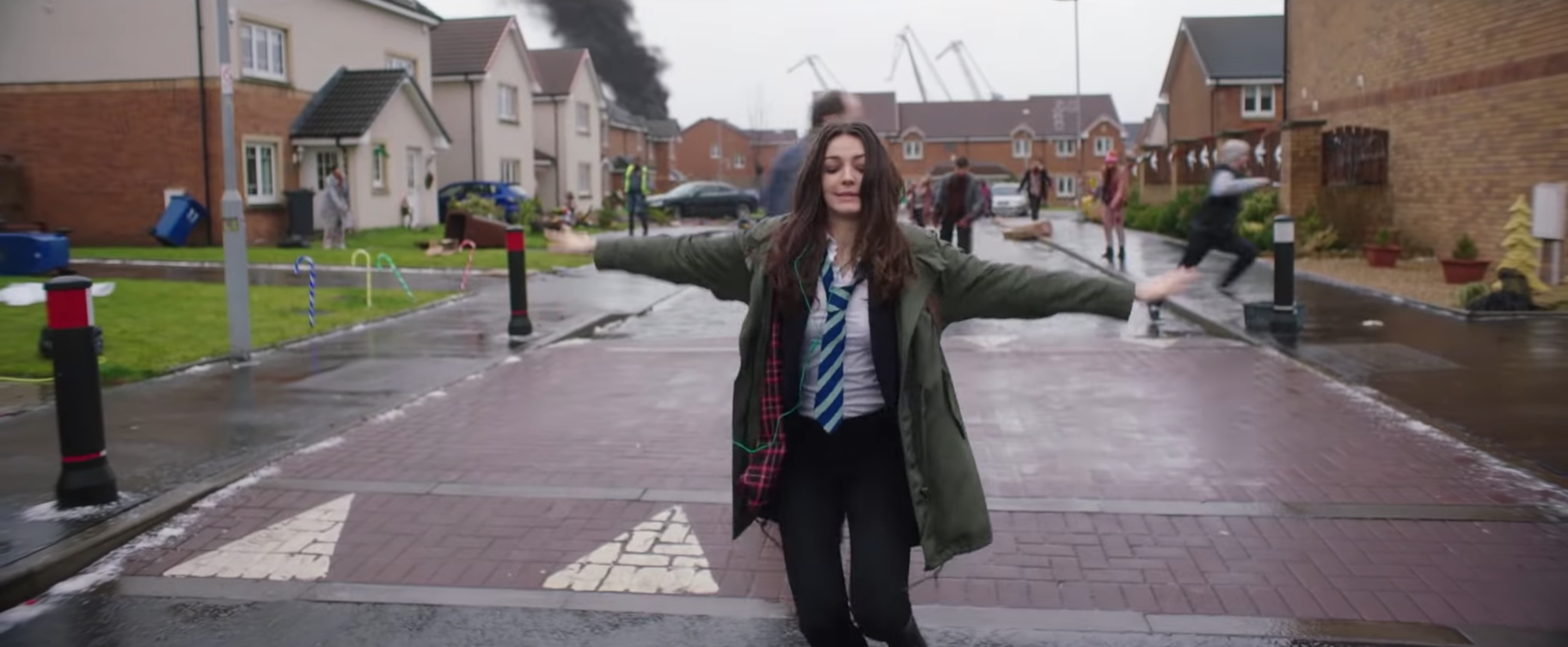

After much ado and promotion, and not a little worry on the part of fans from the 1964 classic Mary Poppins, starring Julie Andrews, Mary Poppins Returns blows into theaters just in time for Christmas. It hopes to make some box office magic, and bring a little joy into what has been a trying year for nearly everyone, at least in the US.
Magical it is, indeed, from the very first sequences through the last music-filled moments. This story, however, is built around subjects carrying decidedly more weight, tackling issues like grief, neglect, the damaging effects of loss on both children and adults.
In what is being called a sequel, this film takes place in the 1930s during the depression, or the “Great Slump”. An adult Michael Banks (Ben Wishaw) lives with his children in his childhood home of 17 Cherry Tree Lane. Though emotionally supported by his sister Jane (Emily Mortimer) and his live-in housekeeper Ellen (Julie Walters), Michael is overwhelmed by grief over the loss of his wife, distracting him from the proper care of his daughter Annabel, and sons John and Georgie. He has all but abandoned his work as an artist, taking a low level job at Fidelity Fiduciary Bank, where his father and grandfather worked before him. Like many struggling with loss, his memory is faulty, and he can barely focus on his finances, his family, or his work. The house is in chaos, and he has even forgotten or been financially incapable of paying the mortgage, leading to risk of foreclosure.
Enter Mary Poppins (Emily Blunt), who flies in on an errant kite Georgie had unearthed from the family attic. Fantastical, joy-filled adventures with the children ensue, often with enthusiastic lamplighter Jack (Lin-Manuel Miranda), who knew the family and her, when she was there all those years ago.
There are lots of songs, in fact, 9 of them, written by the team of Marc Shaiman and Scott Wittman, who have a number of Tonys, GRAMMYs and Emmys between them. It’s been said that one failing of the film is how closely the songs parallel in tone the ones from those written in 1964. I disagree. To me, it feels more like in tribute that the filmmakers have created odes to songs like Step in Time, with Trip A Little Light Fantastic, Let’s Go Fly a Kite with Nowhere to Go but Up, and Feed the Birds with The Place Where Lost Things Go. Shaiman and Witman will themselves say they are huge fans of the Sherman brothers. It’s just not possible to replace some of the classic songs, especially Feed the Birds, and they aren’t trying to. Of the 1964 classic Shaiman said, “The movie and the soundtrack were everything to me as a child and taught me everything I know about film scoring. The songs from Mary Poppins are, in a word, perfect.” They wrote the music and lyrics as the script was being written, which is why their songs in Mary Poppins Returns are so integral to the storyline, and function so well in moving the story forward. They wanted the songs to have the tone of the first movie, and feel like they were picking up where the last film ended. In terms of helping define character and story, the standouts are A Conversation, Can You Imagine That, and The Place Where Lost Things Go.
Emily Blunt, as Mary, is both far more fashionable and quite a bit more stern than as played by Julie Andrews. In that respect, Blunt’s portrayal is closer to the character Travers created for her books. Much like the Sherman brothers, no one can measure up to Andrews, and it’s clear Blunt doesn’t try. She makes Mary Poppins her own. Fun, mischievous, and a consummate problem-solver, Blunt’s Mary seems to be at once game for anything and completely in control. In working to restore childlike wonder and optimism for the future to a family fractured by loss, she walks the line between the magical and the miraculous. Is she a guardian angel or a good witch? Either way, this Mary is, indeed, practically perfect; ever watchable and entirely beguiling. Both Lin-Manuel Miranda and Ben Wishaw add immeasurably in their roles as Jack and Michael, with Miranda starring in some of the best numbers, and Wishaw holding the center or heart of the film as the emotionally wayward dad. Meryl Streep is winning and entertaining to watch in her one scene as Mary’s cousin Topsy. That’s saying something, as her song is the weakest of the film.
The animated sequences, which were created entirely with 2D animation, are the most representative examples that show the artists, cast and crew are as up to the task as their predecessors in 1964. Costume designer Sandy Powell finds a way, by hand drawing and painting the costumes to look two dimensional, to integrate the live action performers with the animated characters in a way far exceeding the original. It’s clear the animators were inspired by the style of xerography and background illustration used for Mary Poppins, and it’s a welcome throwback, especially to fans of Hamilton Luske and the many genius animators including Ollie Johnston, Milt Kahl, Ward Kimball, Eric Larson, and Frank Thomas, who contributed all those years ago.
Miranda said of director Rob Marshall, “I’m convinced he was born in the wrong decade. If this were the 50s, he would have made 50 MGM musicals by now.” With Mary Poppins Returns, he certainly showed the height of hubris by committing to the creation of a sequel to such a beloved original. There will be those who would never be willing to love a film that both celebrates the original and reinvents the world it created. The open-hearted and those seeking some new magic will glory in it. Not so much lucky as incredibly skilled and passionate, Marshall has succeeded in making a charmer that can be seen repeatedly, and will no doubt gather scores of new and longterm fans.
5 out of 5 stars
For my interview with Mary Poppins Returns costume designer Sandy Powell, go to TheCredits, HERE.
For my gallery blog about the influence on Mary Poppins Returns of Oscar winning concept Mary Poppins artist Peter Ellenshaw go HERE.



